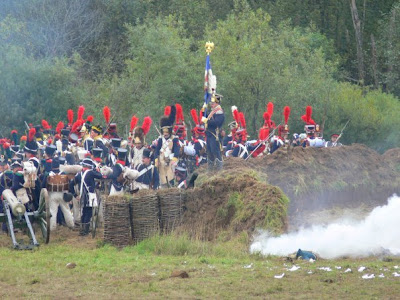The first Russian nuclear reactor, December 25, 1946
December 25, 2016 was the commemorative date for Russian nuclear industry - the first national nuclear reactor called F-1 was activated 70 years ago.
All paperworks created on the territory of the present Kurchatov Institute were marked confidential. |
| Sign on the Kurchatov Institute - Nuclear Reactor F-1 |
The best minds of the country worked on this project. Nowadays, the memorial tablet dedicated to the first nuclear reactor shines on the wall of the building, but 70 years ago this top secret installation was known as the assembly plant or Laboratory No.2. Only few people knew what hid behind these walls.
The best architect of that time, Alexey Shchusev, the author of the mausoleum in Red Square, was engaged in the construction of the first Soviet reactor. But the building appeared to be unusual; as one can notice - there are no doors in it. The answer is simple – the entrance is the other way round, behind the door. For safety reasons the reactor, which in those times was named an atomic boiler, is located at a depth of 10 meters, directly under Shchusev‘s building in Moscow.
The first Soviet reactor was erected layer by layer. The reaction was activated when the height of the reactor reached 62 layers. The staff of Laboratory No.2 literally shouldered all these 400 tons of graphite and 50 tons of uranium.
 |
| Kurchatov Institute building |
70 years ago, on December 25, 1946 the experiment was carried out in the manual way. To activate the reaction it was necessary to extract the cadmium rods out of the uranium-graphite pile. It was performed manually with the lever hoist, millimeter by millimeter. The extreme caution was required because the reactor could explode. Kurchatov himself sat at the control desk, the rest of people were asked to leave the basement. If the rods, which had been placed into the absorber reactor, were just simply extracted, it could be critical. And nobody knew the height up to which the rods might have been raised, so the experiment began. At first, they were raised and checked in steps of 10-20 centimeters.
The only way to track the location of the rods was a periscope. The same one which was used in the submarines of that time.
Why Kurchatov placed an axe by him?
The rods are the only parts which can stop the chain reaction. Just imagine that you have a rod |
| Nuclear sign - do not operate - men are working! |
It appeared that there was no necessity in that axe. The experiment was turned out to be a success.
It was the first time when the Soviet scientists managed to perform the controlled chain reaction. As a memento the clock in the room had been stopped. Up to now, it reads 6 o’clock – the time of the beginning of the new era. It was the demonstration of the success of the Soviet science, which could - in the extreme conditions of the wartime, in these absolutely wild conditions – make a dash, so mighty and real,
 |
| Clock showing the time of the first nuclear experiment |
 |
| F-1 Nuclear Reactor |
The parity was restored.
From the very beginning, the purpose of creation of the nuclear reactor was the development of the nuclear weapons. The Soviet Union could not sleep easily after the Americans had dropped the nuclear bomb on Japan in 1945.But for the creation of the deterrent weapon the plutonium was needed, which didn’t exist naturally. It could be produced only as a result of the nuclear reaction of the uranium. That’s why in as little as three years after the reactor F-1 was activated; the Soviet Union had performed the first test of the nuclear bomb, too. The parity was restored.
 |
| Switch board of the F-1 reactor |
The first Soviet atomic boiler was in service for a long time. In spite of its age it was used for the nuclear research. Today, there is a modern museum here for everybody to visit. It’s not only the rare opportunity to see the nuclear reactor – it has been deactivated and completely secured – but, literally, the opportunity to touch the history.
This article was posted with the help of Russian Translation Pros - Professional Russian Translation

















